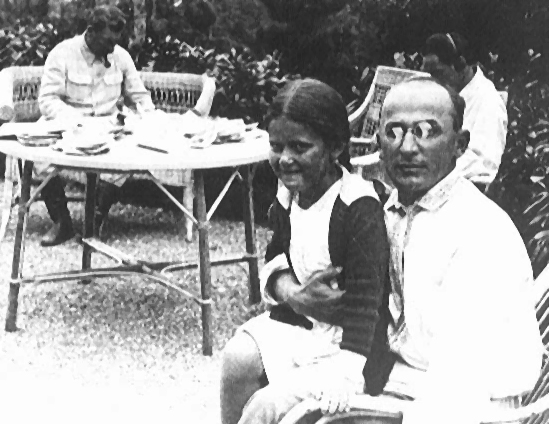 |
| President Eisenhower's official portrait. |
In January 1953, Dwight D. Eisenhower officially became the next president of the United States. Previously, Eisenhower had been the commander of the U. S. army in Europe during World War II.
Two months later, in March 1953, Joseph Stalin died under mysterious circumstances. It's possible that he died naturally of a stroke, but it's also possible that he was poisoned by the men trying to succeed him.
No matter how it happened, Stalin was dead, and a two-year power struggle followed. The three candidates for leadership were Georgy Malenkov, Lavrentiy Beria, and Nikita Khrushchev. (All three had dinner with Stalin the night that he became fatally ill.)
You can learn more about these men (and their struggle for power) by clicking through the slideshow below.
Lavrentiy Beria
Lavrentiy Beria was the head of Stalin's secret police. Initially one of the most powerful men in Moscow after Stalin's death, he was betrayed and executed by his colleagues. This image shows Beria with Stalin's daughter on his lap. Georgy Malenkov
Stalin's official successor was Georgy Malenkov, who inherited Stalin's position as "Communist Party Leader." However, after just two weeks, Malenkov was forced to step down and become the Soviet Premier, which was basically the second in command. Western leaders were confused and believed that Malenkov was still in charge, but in reality he had already been undermined by Nikita Khrushchev, who took Malenkov's place as Communist Party Leader. Nikita Khrushchev
Nikita Khrushchev was probably the brains behind the downfall of both Beria and Malenkov. He worked quickly to undermine both of those men and solidify his own power. Even though he didn't officially secure himself as leader of the country until 1955, he was effectively the man in charge soon after Stalin's death. He remained at the head of Soviet politics until 1964. |


![Nikita Khruschchev. Bundesarchiv, Bild 183-B0628-0015-035 / Heinz Junge / CC-BY-SA 3.0 [CC-BY-SA-3.0-de (http://creativecommons.org/licenses/by-sa/3.0/de/deed.en)], via Wikimedia Commons](https://s3.amazonaws.com/cms.accelerate-ed.com/image/1d65584c-5f31-41d0-8d9a-cc2e00b799e5.jpg)
